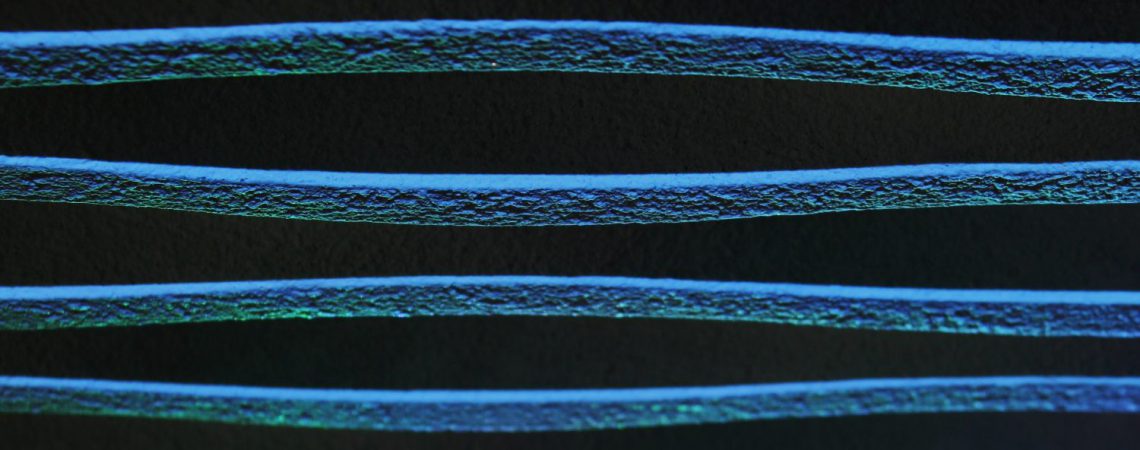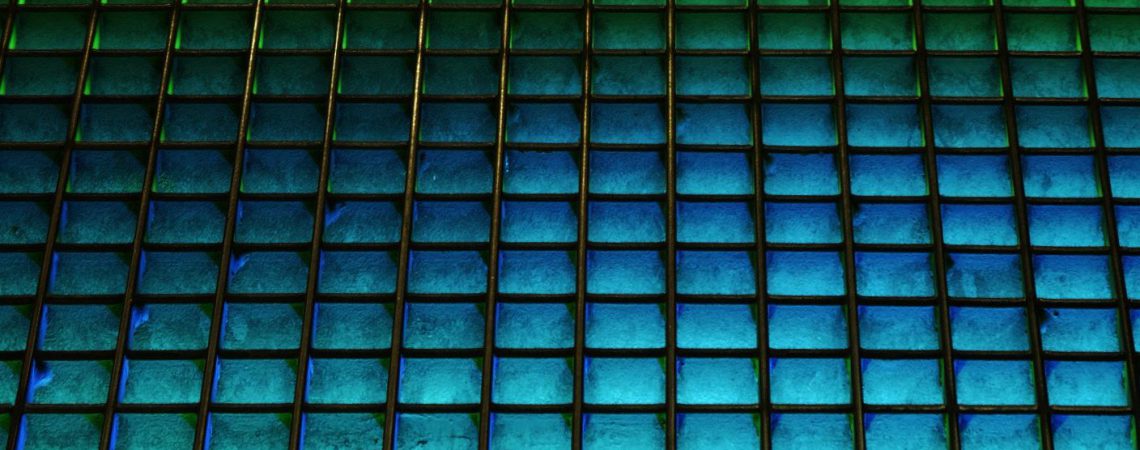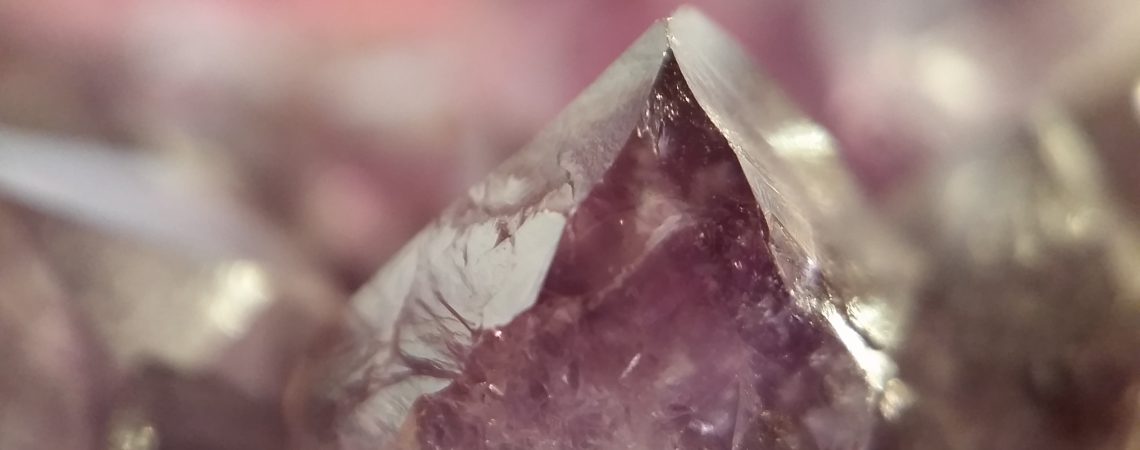
what does an arrhythmia look like on an ecgthe telescreen received and transmitted simultaneously page number
Ventricular arrhythmias can also occur in a healthy heart due to smoking, excessive caffeine, and other factors. These signals are recorded by a machine and are looked at by a doctor to see if they're unusual. caused by an abnormal electrical focus within your ventricles. Anxiety may also caused VT. Management for Pulseless VT: Initiate cardiopulmonary resuscitation; follow ACLS protocol for defibrillation, ET intubation and administration of epinephrine or vasopressin. Atrial and ventricular rhythms vary slightly. When you have an arrhythmia, your heart may beat too quickly or too slowly, or you may experience an irregular rhythm in which your heart feels as if it is "skipping a beat." One way to stay on top of your condition is to measure your heart rate periodically and keep track of changes. Bonow RO, et al., eds. This is referred to as normal sinus rhythm. Sudden onset and termination of arrhythmia. 2016;13(4):e136-e221. See additional information. I tried to download it but its not downloadable after I click the picture and picture format is not on JPEG but its PNG. It also detects the intervals in between heartbeats, which can show if they are too long, too short, or irregular in another way. But arrhythmias that are more serious can cause heart failure, stroke, Long QT syndrome. The right atrium receives oxygen-depleted blood from the body and pushes it to the right ventricle. Nursing goal is towards administration of prescribed treatment to decrease ventricular response, decrease atrial irritability and eliminate the cause. What, if anything, appears to worsen your symptoms? Sinus tachycardia is often asymptomatic. An electrocardiogram (ECG) can show the regular, organized electrical activity of your heartbeats. heartbeat (palpitations). Acquired conditions: A heart attack, for example, can cause part of the heart muscle to turn to scar. Heart rate is how many times the heart beats per minute. The three types are first degree, second degree and third degree. If patient is stable, drug therapy may include calcium channel blockers, beta-adrenergic blocks, or. A normal heartbeat is referred to as normal sinus rhythm (NSR). In extreme cases, collapse and sudden cardiac arrest. Management includes treating the underlying cause and administering anticholinergic drugs like atropine sulfate as prescribed. Early or premature ventricular contractions are caused by increased automaticity of ventricular muscle cells. The left side of the algorithm outlines treatment for a shockable rhythm, like VFib or pulseless V-tach, while the right side of the algorithm outlines treatment for non-shockable rhythms, Other tests provide monitoring at home as you follow your daily routine. Arrhythmia management is one of the things I really love about emergency medicine. This method to reset the heart rhythm may be done with medications or as a procedure. When did you first begin experiencing symptoms? Supraventricular tachycardia rapid heartbeat involving the atria (upper chambers of the heart). This tracing consists of representations of several waves that recur with each heartbeat, about 60 to 100 times per minute. Heart rhythmabnormalities: A heart typically beats in a steady rhythm. Coronary artery disease, degenerative heart disease, acute inferior wall MI. is best for you. Stimulants, hyperthyroidism, COPD, infection and other heart diseases. Premature Ventricular Complexes. Last medically reviewed on September 30, 2021. Discover common causes for palpitations after eating and learn when you should seek medical. 2019 HRS/EHRA/APHRS/LAHRS expert consensus statement on catheter ablation of ventricular arrhythmias. An arrhythmia can occur in the sinus node, the atria, or the atrioventricular node, or the ventricle. Causes of PJC may include myocardial infarction or ischemia, digoxin toxicity, excessive caffeine or amphetamine use. (ischemia). AV blocks are conduction defects within the AV junction that impairs conduction of atrial impulses to ventricular pathways. https://www.nhlbi.nih.gov/health-topics/atrial-fibrillation. With that burst of electricity, the ventricles contract and pump blood out to the body. Several conditions can cause an enlarged heart, including a heart disease known as cardiomyopathy. A similar condition called postural orthostatic tachycardia syndrome (POTS) occurs when a person stands upright, causing tachycardia without a drop in blood pressure. With exercise, the heart rate will increase to above 100 times per minute. For people with severe, frequent arrhythmias, an implantable cardioverter device (ICD), can be a literal life-saver. Fainting or near-fainting spells. Clinical manifestations include vertigo, weakness, and an irregular pulse. I have other health conditions. There is often an underlying health condition causing this slow heart rate. Arrhythmia management for the primary care clinician. A sensation of fluttering or irregular If someone experiences severe chest pain, shortness of breath, prolonged palpitations or racing heart, If someone loses consciousness. Its important to know that there is no difference between an ECG and an EKG. Heart rate > 160 bpm; rarely exceeds 250 bpm. Assessment of the patient with a cardiac arrhythmia. If you think you may have a heart arrhythmia, make an appointment with your doctor. Exercise 30 to 40 minutes most days of the week. Irregular interval measurements Other types of heart condition The ECG has several variations: Exercise ECG, or stress test. Ventricular rhythm regular and rate slower than atrial rate. This triggers recurrent bouts of tachycardia that may only be resolved with a treatment called cardiac ablation used to block faulty nerve signals. P waves inverted; may precede be hidden within, or follow QRS complex. Looks like an EKG almost $BBBY broke 0.13 ever so slightly. irregularly. If patient is stable, drug therapy may include calcium channel blocker, beta-adrenergic blockers, or antiarhythmics. The best example is atrial fibrillation, which is rare before age 50 but increases dramatically afterward. Management, however is directed at the treatment of the primary cause. Treatment for heart arrhythmias may include medications, therapies such as vagal maneuvers, cardioversion, catheter procedures or heart surgery. Regarding your comments on the covered indications; since the LCD does not state when the EKG should be performed, no change has been made to the standard EKG indication. An electrocardiogram abbreviated as EKG or ECG measures the electrical activity of the heartbeat. Atrial fibrillation. Heart failure; old or acute myocardial ischemia, infarction, or contusion. When your heart is out of rhythm, the ICD sends a small electrical shock to the heart to jolt it back into a healthy rhythm. 2023 Dotdash Media, Inc. All rights reserved, Verywell Health uses only high-quality sources, including peer-reviewed studies, to support the facts within our articles. 2019;21:1143. Debra Sullivan, Ph.D., MSN, R.N., CNE, COI, Pacemaker Surgery Recovery: Learn the Dos and Donts, Long-Term Blood Thinner Use: What You Need to Know. Read more on how these tests work. Have your symptoms been continuous, or do they come and go? If you think you have an arrhythmia, consult your doctor. Being ready to answer them may reserve time to go over any points you want to spend more time on. When it does, symptoms may include: A sinus rhythm is the beating of the heart caused by electrical impulses from the sinus node. The sinus node is a group of cells in the heart that generates these impulses, causing the heart chambers to contract and relax to move blood through the body. Thank you so much. Your symptoms get worse or you start to have new symptoms, You need help with managing stress or Since different rhythm disturbances need different treatments, How to download? There are a number of circumstances in which it is normal for the sinus rhythm to be at the low end of the range of beats per minute. Other ways to manage risk factors and improve heart health include: If you suspect you have an arrhythmia, explain your symptoms to a doctor or cardiologist. Theres something satisfying about slapping the defibrillator pads on a patient and analyzing an ecg rhythm. This includes a small impulse from the sinus node, followed by the spike that reflects the heartbeat itself, and then a return state before the next beat. Ventricular Extrasystoles (VE): Fixed Coupling Interval. Asirvatham SJ (expert opinion). There are many tests available to diagnose arrhythmias. means fast. Management if the patient is unstable with ventricular rate of greater than 150 bpm, prepare for immediate cardioversion. to squeeze correctly. Clementy N, et al. The electrical signal then travels to the atrioventricular (AV) node, located between the atria and the ventricles. If you have atrial fibrillation, blood thinners may be prescribed to prevent blood clots. Recovery from pacemaker implantation often means limiting your physical activity. Are there any brochures or other printed material that I can take home with me? Working with your healthcare provider Before your visit, write down questions you want answered. Know why a new medicine or treatment is prescribed, and how it will help you. Patients and Visitors. The first step in managing an arrhythmia is to get a proper diagnosis, which is usually done by monitoring your hearts electrical activity. When a person's heart rate is too slow while they're awake, they may have a disorder called sinus node disease or sick sinus syndrome. Making lifestyle changes that support healthy heart functioning are crucial, whether you take medications for your heart, have a pacemaker, or are otherwise being treated for an arrhythmia or other cardiac condition. Management includes assessment of the cause and treat as indicated. Tachycardia can feel as though your heart is racing or that it might pound out of your chest. Pacemaker insertion if patient is refractory to drugs. The pattern of electrical impulses reflects the way that the chambers normally beat to allow blood in and out of the heart. QRS complex wide and distorted, usually >0.14 second. you. It has the following characteristics. Treatment decisions are based on a thorough analysis of your condition, medical history, lifestyle and other factors. that Cardiovascular complications in COVID-19. Sinus rhythm may look like a lot of little bumps, but each relays an important action in the heart. More severe arrhythmias can cause symptoms such as lightheadedness and fainting and can raise the risk of blood clots. Mayo Clinic, Rochester, Minn. July 27, 2019. Drug toxicity by cardiac glycosides, aminophylline. WebWhat is an arrhythmia? even cardiac arrest. With each beat, an electrical impulse (or wave) travels through the heart. Lee JN, Whang MC, Kang BG. Arrhythmiaordysrhythmiaare disturbances in the normal cardiac rhythm of the heart which occur as a result of alterations within the conduction of electrical impulses. Electrocardiogram Start CPR is pulseless. Fatigue or weakness. Atrial flutter is diagnosed by your medical history, history of symptoms, and physical exam. Often used to treat ventricular tachycardia or heart failure, Cardiac resynchronization therapy (CRT): a pacemaker or ICD used to treat certain types of heart failure that are caused by dyssynchronous contractions (when the chambers of heart beat out of time with each other). your symptoms are, and if you have other conditions such as diabetes, kidney failure, Plenty of alternative treatments for arrhythmia are available to complement your existing AFib treatment plan. Usually referred to as V-Tach or VT, this arrhythmia is easy to recognize on an EKG/ECG. These will help determine if you are indeed experiencing an abnormally slow, fast, or irregular heartbeat and what may be causing the problem. to treat arrhythmia, including medicines, devices, cardiac ablation, and surgery. electrical system of your heart and cause an arrhythmia. it is considered a medical emergency because cardiac output (CO) cannot be maintained because of decreased diastolic filling (preload). Sinus arrhythmia can be normal, especially in young and healthy people. Whats Causing Me to Wake Up with a Racing Heart, and How Do I Treat It? Magnesium sulfate IV if PVC induced by hypomagnesaemia. No P waves, or P waves that appear as erratic, irregular base-line fibrillatory waves. Its due to an abnormal circuit of electrical activity. If you have a follow-up appointment, write down the date, time, and purpose for that as slow (bradyarrhythmia) or fast (tachyarrhythmia). Atrial fibrillation. called electrodes are placed at specific locations on your body such as your chest, diagnose arrhythmias. Digoxin toxicity and excessive caffeine or amphetamine use. complications. Conditions and Services. Normal physiologic response to fever, exercise, anxiety, May accompany shock, left-sided heart failure, cardiac tamponade, hyperthyroidism, and. WebTorsades de Pointes is a fast heart rhythm that starts in your ventricles, or lower chambers of your heart. Davidovic G, Iric-cupic V, Milanov S, et al. Most causes for waking up with a racing heart aren't serious. Sinus bradycardia can occur normally during sleep, when most people experience a dip in heart rate to below 60 beats per minute. any Sinus Rhythm: What's Normal and What's Not. This may be caused by congenital abnormalities, rheumatic fever, hypoxia, MI, LEvs disease, Lenegres disease and digoxin toxicity. How the heart works. Atrial and ventricular rhythms normal except for missing complex. National Heart, Lung, and Blood Institute. In addition, if it detects ventricular tachycardia or ventricular fibrillation, it sends out a shock to reset the heart to a normal rhythm. and with contractions of your heart chambers by: An arrhythmia can occur in the The heart's rhythm is referred to as sinus rhythm because the electrical impulses are generated by the sinus node. In recent years, there has been a shift toward tailoring. An ECG can show: Some arrhythmias may cause few, if You can learn more about how we ensure our content is accurate and current by reading our. Philadelphia, Pa.: Saunders Elsevier 2019. https://www.clinicalkey.com. QRS complexes after P waves except in very early or blocked PACs. Installation of pacemaker. Symptoms include: Sinus rhythm that is abnormally fast is referred to as sinus tachycardia. https://www.uptodate.com/contents/search. Bring someone with you to help you ask questions and remember what your provider tells Check out these best-sellers and special offers on books and newsletters from Mayo Clinic Press. The electrodes are connected to wires that pick up the heart's P waves preceding, hidden within (absent), or after QRS complex; usually inverted if visible. Atrial fibrillation is disorganized and uncoordinated twitching of atrial musculature caused by overly rapid production of atrial impulses. Explore Mayo Clinic studies testing new treatments, interventions and tests as a means to prevent, detect, treat or manage this condition. One or more electrode-tipped wires run from the pacemaker through the blood vessels to the inner heart. Thank you, {{form.email}}, for signing up. 2015;4(1):28-34. doi:10.15420/aer.2015.4.1.28, Bibas L, Levi M, Essebag V.Diagnosis and management of supraventricular tachycardias. Also The heartbeat is controlled by electrical signals, called impulses, that arise from a structure in the heart called the sinus node. Can be seen in digoxin toxicity and inferior wall MI. or If patient is unstable with ventricular rate > 150bpm, prepare for immediate cardioversion. Sinus rhythm is the pattern of your heartbeat. Hi Bob, sorry about that. The current affects the electrical impulses in your heart and can restore a normal rhythm. Bashir MU, et al. Some arrhythmias cause few, if any, problems. Additionally, P waves are typically monoform and in a pattern consistent with atrial activation originating from the sinus node. If a heart arrhythmia persists for more than a few minutes or is accompanied by fainting, shortness of breath or chest pain, call 911 or your local emergency number or have someone drive you to the nearest emergency room. Intrinsic abnormality of AV conduction system. These can either help stabilize the heart rhythm or protect against complications. Your doctor may ask: Mayo Clinic does not endorse companies or products. A blood test can be particularly helpful in checking for factors that may be responsible for your arrhythmia. Jeffrey S. Lander, MD, is a board-certified cardiologist and the President and Governor of the American College of Cardiology, New Jersey chapter. This includes a small impulse from the sinus node, followed by the spike that reflects the heartbeat itself, and then a return state before the next beat. 2018 Jul;118(7):1397-1406. doi:10.1007/s00421-018-3871-6. Causes of ventricular fibrillation is most commonly myocardia ischemia or infarction. In some cases, medicine may be given to accelerate the heart rate. These cells produce electrical impulses that cause heart chambers to contract and relax in order so that blood can move through the heart as follows: A normal sinus rhythm is one in which the rate of firing is regular and neither too slow nor too quick. In many cases, there are no obvious symptoms at first. Inferior wall MI or ischemia or infarction, Use of quinidine, procainamide, beta-adrenergic blockers, calcium. Together you will choose a treatment We avoid using tertiary references. Accessed Aug. 4, 2021. Thank you It involves the use of a smaller, thinner transducer that is passed down the throat to the esophagus, which is behind the heart and may provide a better view. doi:10.1016/j.amjmed.2015.04.024, Page RL, Joglar JA, Caldwell MA, et al. With a normal sinus rhythm (NSR), the pattern will be uniform with high and low impulses falling within "normal" parameters. Here are some examples: Congenital abnormality of the hearts electrical system: For example, some patients are born with an abnormal muscle fiber connecting the upper and lower chambers of the heart. 7th ed. supraventricular arrhythmias. Circulation. doi:10.1016/j.hrthm.2015.09.019, Mortola JP, Marghescu D, Siegrist-Johnstone R. Respiratory sinus arrhythmia in the immediate post-exercise period: correlation with breathing-specific heart rate. Noseworthy PA (expert opinion). If patient has an ejection fraction less than 40%, consider amiodarone. Cells in the heart starts to fire or go off before the normal heartbeat is supposed to occur. or tests. There are several types of arrhythmia that originate from the sinus node, some of which cause the heart to beat too slowly or too rapidly. PVCs usually are not considered harmful but are of concern if more than six occur in 1 minute, if they occur in pairs or triplets if they are multifocal or if they occur or near a T wave. Catheter ablation: procedure to cauterize the specific heart cells that cause abnormal heart rhythms, Cardioversion: procedure delivering a precisely controlled shock to your heart to reset an atrial fibrillation or atrial flutter; performed under anesthesia, Your doctor may recommend medications based on your type of arrhythmia, medical history and current medications and medical conditions, Pacemakers: inserted under the skin below the collarbone, pacemakers deliver regular electrical pulses through thin, highly durable wires attached to the heart. 2023 Nurseslabs | Ut in Omnibus Glorificetur Deus! Pause not equal to multiple of the previous rhythm. Discontinuation of digoxin if appropriate. It may also include having a pacemaker An ECG is a test that measures and records the hearts electrical impulses to show the strength of these impulses as they travel through the heart, as well as heartbeats speed and rhythm. To download, simply click on the images below and save. P waves regular but aberrant; difficult to differentiate from preceding T wave. Sinus tachycardia refers to a faster-than-usual heart rhythm. Advanced treatments include medication, destruction of cells that Ventricular fibrillation is rapid, ineffective quivering of ventricles that may be rapidly fatal. As with tachycardia, this pace of your heartbeat with bradycardia means the organs and tissue in the body arent getting the steady, robust supply of oxygenated blood they need for optimal health. Treatment is indicated if the client has underlying disease because PVCs may precipitate ventricular tachycardia or fibrillation. WebElectrocardiogram (EKG): If its normal, you may not need any other test. Adenosine by rapid I.V. Blood passes into the left ventricle and is pumped out to the body. These signals are transmitted in a controlled way to the four chambers of the heart, causing them to contract and relax in sequence to pump blood in and out of the heart. A small burst of electricity causes the muscle to contract. If a standard ECG doesnt pick up an arrhythmia, your doctor or healthcare professional may have you wear a portable monitor. any, problems. All rights reserved. American Journal of Emergency Medicine 2020; doi:10.1016/j.ajem.2020.04.048. An abnormally slow heartbeat is called bradycardia, while an abnormally fast heartbeat is called tachycardia. For example, drugs to control the heart rate and restore a normal heart rhythm are often prescribed for most people with tachycardia. Atrial fibrillation may be asymptomatic but clinical manifestation may include palpitations, dyspnea, and pulmonary edema. To get a good look at your heart and lungs, and particularly to see if your heart is enlarged, a standard chest X-ray may be done. However, when the heartbeat becomes too slow to pump enough blood throughout the body, treatment may be needed. Maze procedure. 2023 Cedars-Sinai. Unsteady heart rates, such as atrial fibrillation (AFib), can feel like fluttering in your chest or like your heart is quivering. Am J Cardiovasc Dis. In this test, also called an EP study, a doctor threads thin, flexible tubes (catheters) tipped with electrodes through the blood vessels to different areas within the heart. Is there anything you suggest that I add to my diet? Healthline Media does not provide medical advice, diagnosis, or treatment. QRS complex configuration and duration normal, except in aberrant conduction. Some event monitors switch on automatically when they detect a change in rhythm. You may need to perform cardiopulmonary resuscitation (CPR) if the heartbeat or breathing has stopped, and use an automated external defibrillator (AED), An arrhythmia is an abnormality in the timing or pattern of the heartbeat. Possibly atropine if PR interval exceeds 0.26 second or symptomatic bradycardia develops. But when your heart isnt beating in a consistent, synchronized way, you have a higher chance of serious cardiovascular events, like blood clots and stroke. arms, and legs. Inferior wall MI, or ischemia, hypoxia, vagal stimulation, sick sinus syndrome. When an abnormal heart rhythm develops, its called an arrhythmia.





